Hello friend,
From this week’s newsletter, you might be wondering what my father and piñatas have to do with each other. Yes, tomorrow is my father’s birthday and it’s also Cinco de Mayo, the day Mexicans won the Battle of Puebla in the Franco-Mexican War of 1862, but what ties them in my ruminations this week is more about shape shifting, or maybe more specifically, how our lives unfold in unexpected ways, which in turn asks us to change as well.
My father, Foon “Frank” Wong, was born in a village in the Guangzhou region in 1923. He came to the U.S. during the Chinese Exclusion era as a “paper son”—his father had entered the country illegally, so his best friend who was a U.S. citizen claimed my Dad as his son on the paperwork. When Dad arrived in 1939 as a 16-year-old, he reunited with his father, but lost his family name “Liu” in exchange for his “paper” father’s last name, Wong.
I sometimes wonder at all of the changes my father experienced and witnessed over the next 70 years of his life—fighting in World War II and earning a Bronze Star in the Korean War; raising a mixed race family in a city where there was only two other Chinese for many years; changing careers from graphic design to electronics; encouraging his daughters as they moved into the world, a world that was so different than the one he was born into. China’s final dynasty had ended only 11 years prior to Dad’s birth. From across the Pacific, he saw his homeland pummeled by the Japanese then undergo the Cultural Revolution. In the U.S. he went from being considered an undesired immigrant to resurrected as a “model minority.” He saw a man land on the moon, the advent of email, cellphones, and the Internet.
Our lives are shape shifting as well. Consider the cultural changes over the span of your life. If you’ve reached your middle age, as I have, you can recall a time when there was no social media; when we didn’t have to remove our shoes going through airport security; when smoking was still allowed in restaurants; when Roe v Wade gave women the right to abortions, then was overturned; when our gay family and friends had no right to marry. Perhaps our families have expanded to include other cultures and languages, maybe we’ve lived parts of the world we had never expected to even visit. Most of us navigate a Venn diagram of multiple overlapping circles of experience and communities, while we all seek to find that sweet spot of “home” that comes from connection and acceptance.
As I think of all of this liminality, I’m drawing inspiration from the work of Robert Benavidez, whose sculptures are playful and unexpected, and I hope you find them as thought-provoking as I do.
Wishing you peace in the ways you inhabit your different spaces,
Katarina
In case you missed it:
Invitation 10: “Winter Light” by Mary Temple (public post)
Invitation 11: "Dancers at the Barre," by Edgar Degas
Invitation 12: San Francisco de Asís Church, Ranchos de Taos
Invitation 13: “My Gems,” by William Michael Harnett
Full archive here of free monthly and paid subscriber posts
Invitation 14: “Piñatas of Earthly Delights” by Roberto Benavidez
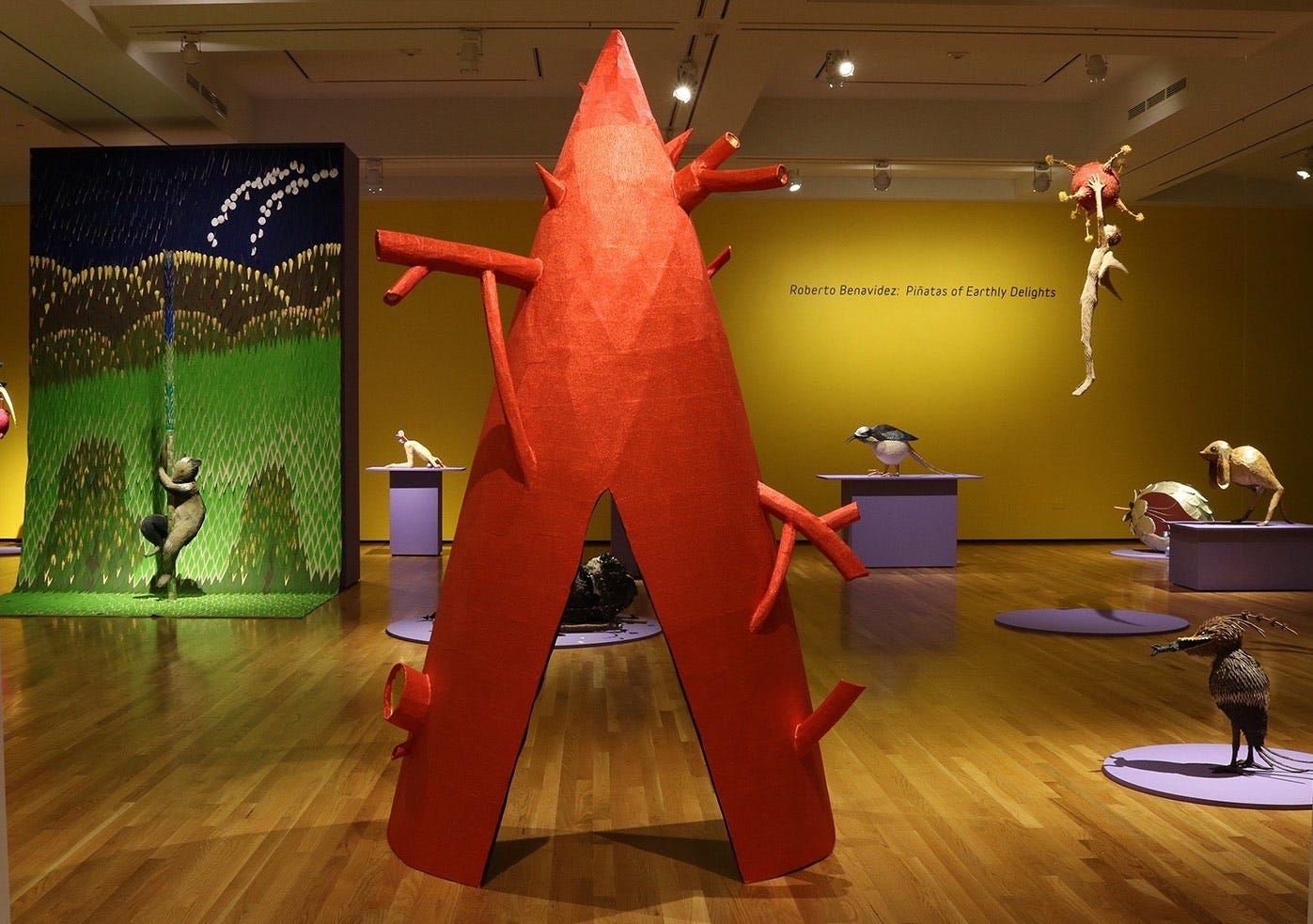
Roberto Benavidez describes himself as a “half-breed, South Texan, queer, figurative sculptor,” and his choice of medium, the playful party piñata, is not going to be what one might expect. Consider his piñatas based on Hieronymus Bosch’s masterwork, “The Garden of Earthly Delights.” The painting moves from a peaceful scene of the Garden of Eden with God seemingly introducing Eve to Adam (on the left), to a riotous large central panel of sensuality and desire, moving to grim scenes of punishment and hell on the right. It is so filled with such strangeness, that art historians have debated its meaning for centuries.
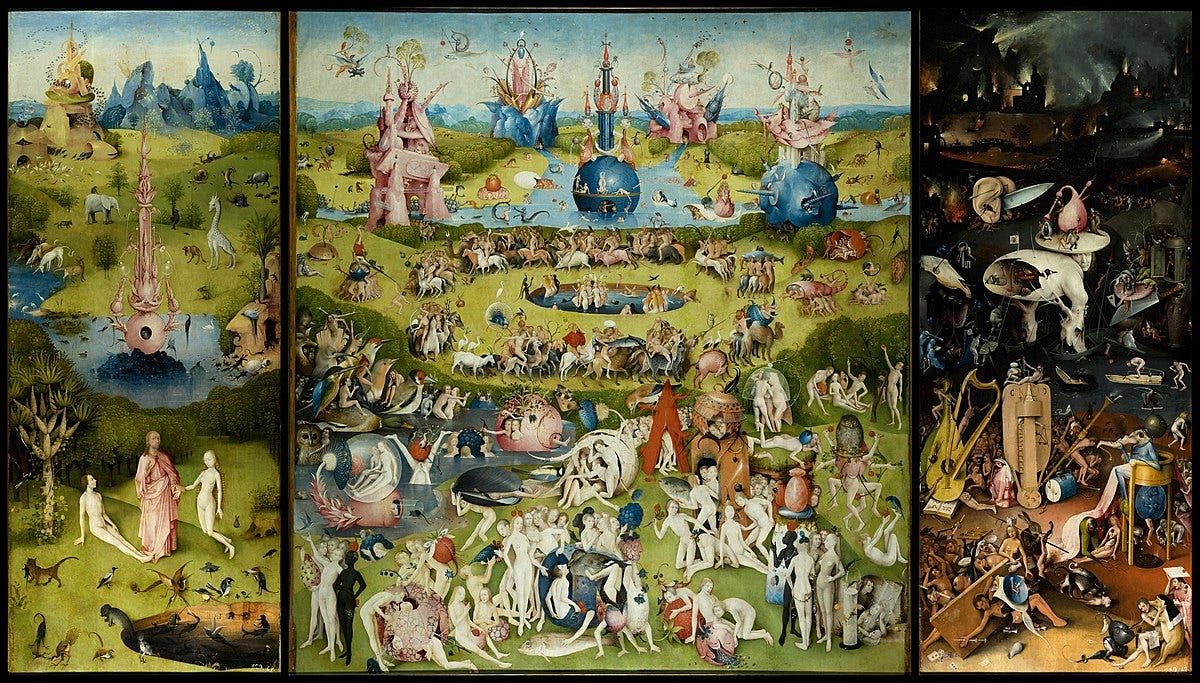
For his exhibition “Piñatas of Earthly Delights,” Roberto focuses on several forms from the painting and recreates them as sculptures…not with traditional materials like wood, metal, or ceramic, but meticulously crafted from papier maché and cut crepe paper. Fill them with candy, hoist them up from a tree, and they’re ready for a blindfolded child to whack them until they deliciously crack apart and release their candy goodness.
That would, of course, miss the point. Most of us think of piñatas as a fun party game, but their history is much richer. There’s some thinking that Marco Polo brought them to Europe from China, where they may have been filled with seeds for New Year celebrations. In Italy and Spain, they were used during the first Sunday of Lent, sometimes in the form of clay pots. When the Spanish came to Mexico, they found the Aztecs had a similar tradition to celebrate Huitzilopochtli, the god of war. They would fill clay pots with offerings, which would spill out when beaten open. The Spanish co-opted the indigenous traditions, and under the guise of Catholicism, used piñatas as enticements for conversion and imbued them with the spiritual qualities of faith, hope, and charity.
In the original painting your eye is constantly darting, trying to make sense of the overwhelming overload of weirdness, but by focusing on a few of the elements and blowing them up, Roberto is doing something different. In creating the oversized fruit, hybrid creatures, and strange structures from “The Garden of Earthly Delights,” Roberto blends the piñata’s complex history with the bizarre and unsettling sensibility of Bosch’s painting.
When I first saw some of these pieces in his studio, I was immediately charmed, but then quickly thrown off kilter. By making them life size—specifically our life size—or even larger, Roberto is forcing us to relate to the objects as projections of our own oddities, desires, repulsions, and fears/beliefs about the transience of our lives. The sculptures cause a palpable push and pull between aversion and enchantment.
With its history, forms, and uses, the piñata itself is a shape shifter. Roberto’s work also shifts between occupying the (contrived) designations of contemporary “fine art” and “craft.” His sculptures are playful yet serious considerations of some of our core human hopes and fears—all wrapped in bright colors, waiting to be cracked open.
Roberto Benavidez is an artist based in Los Angeles. To learn more about his art, please visit: robertobenavidez.com. His work will be included in the Crossing the Line: The Passport Re-Imagined exhibition at the San Francisco Center for the Book opening on May 9, and also in the Cheongju Craft Biennale 2025, Cheongju City, Korea from September 4 - November 2, 2025.
This week’s invitation:
How are you a shape shifter in your garden of earthly delights? What wonderful, strange, and maybe fearsome hybrid creatures reside there and what do they signify to you? Take a few minutes to write your thoughts or turn them into some other form of expression. I invite you to share what came up for you in the comments section as a way for us all to be together.
If you’re enjoying the monthly Three Threads newsletter and would like to receive these invitations every week, please consider becoming a paid subscriber. Your support enables me to have the time and resources to create these posts, and for that, I am deeply grateful.


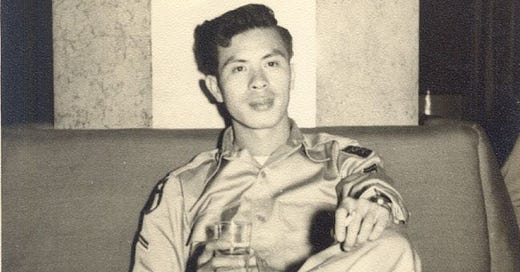




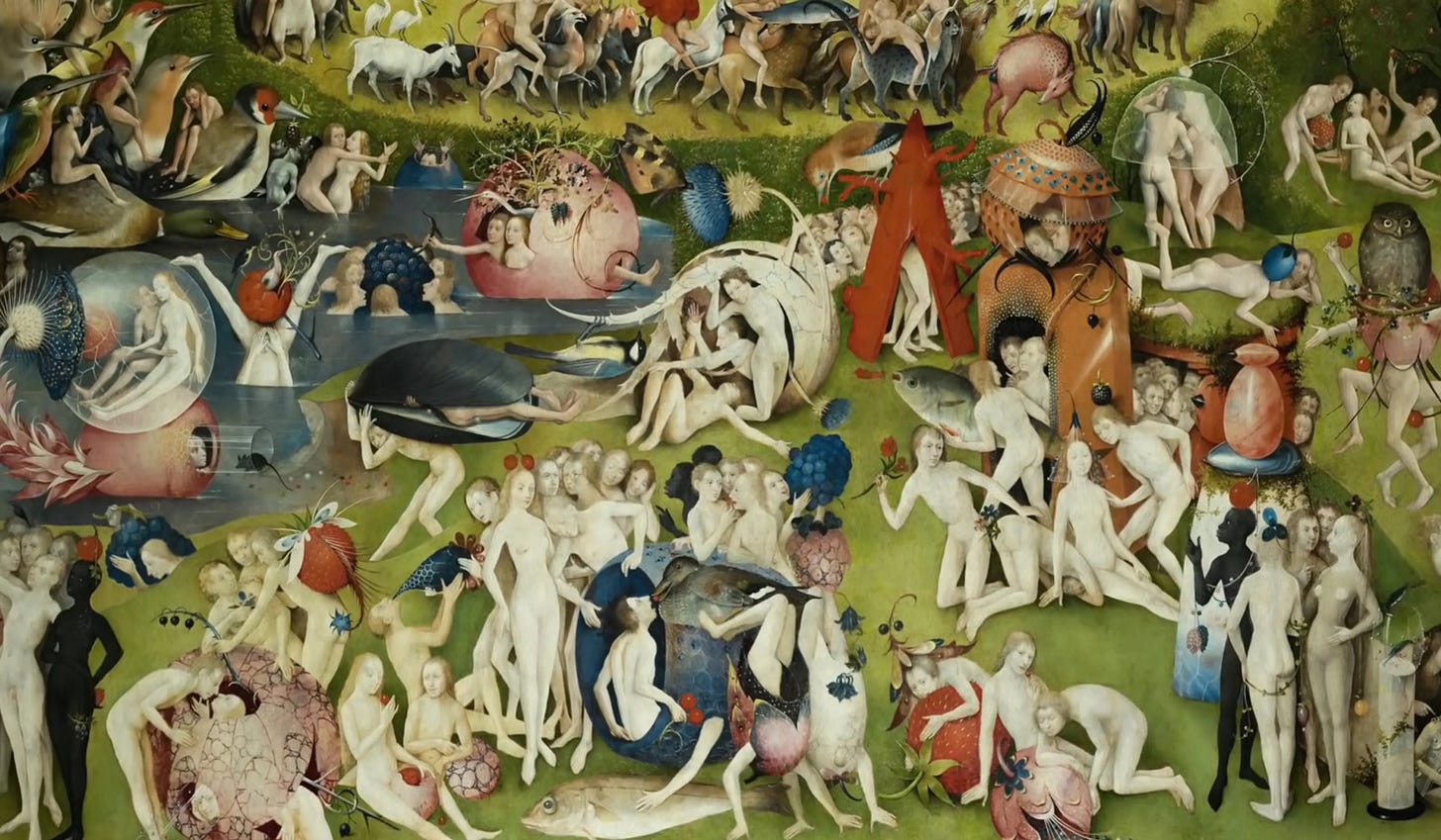

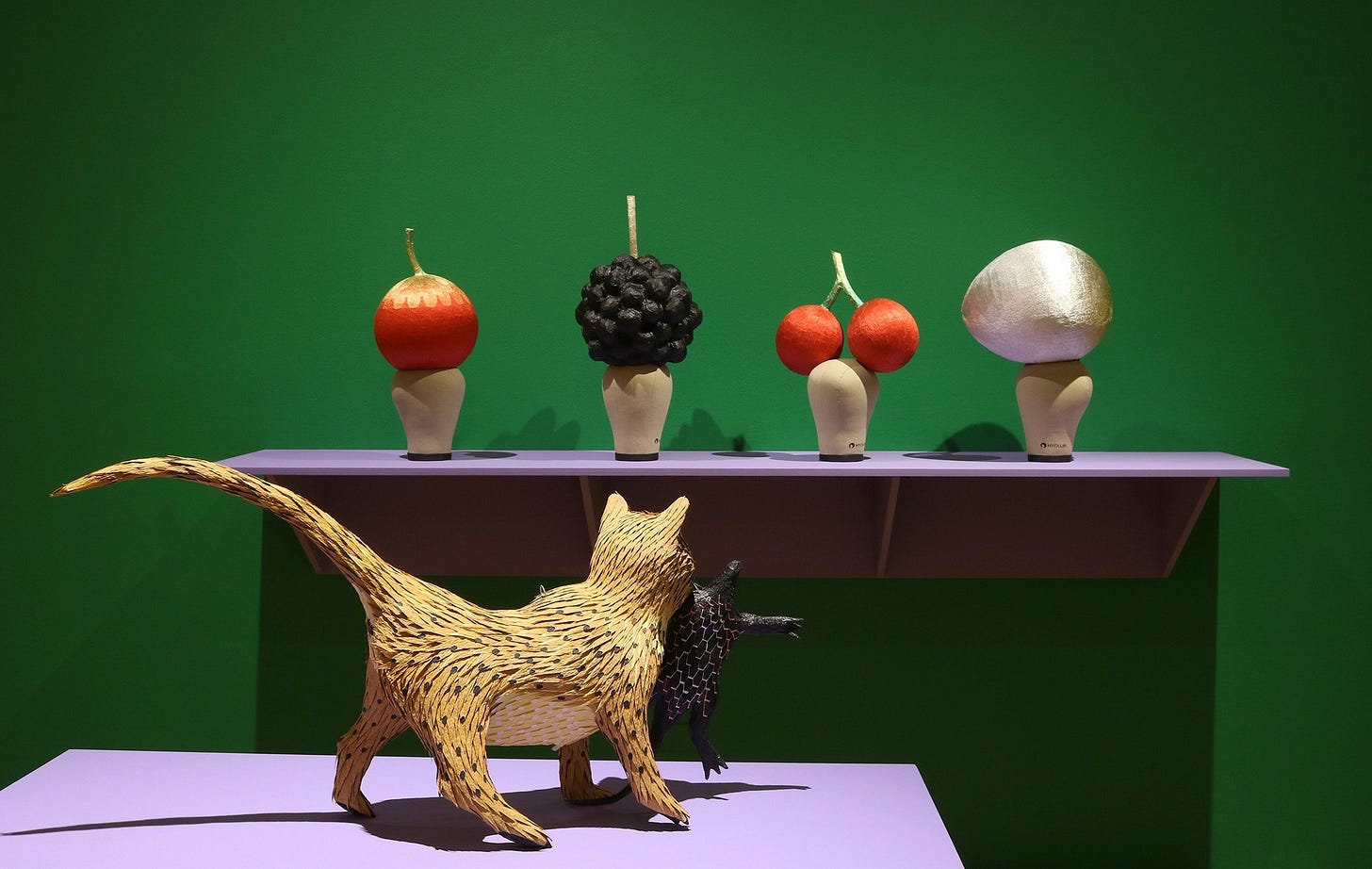
Wonderful I love this week’s piece. It’s such a great invitation as spring shifts to summer. Thanks for this share.